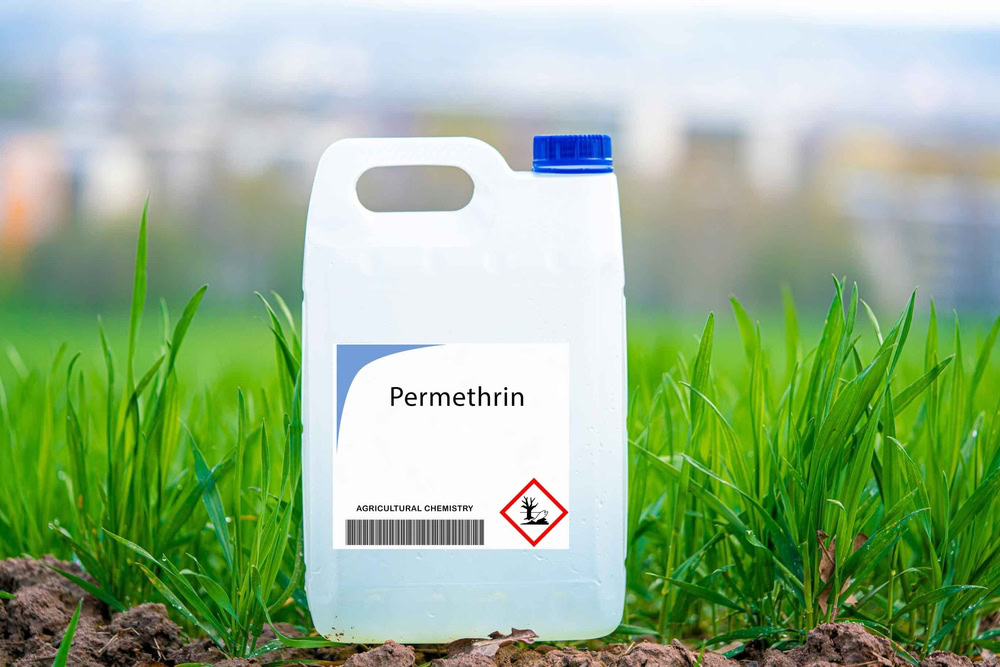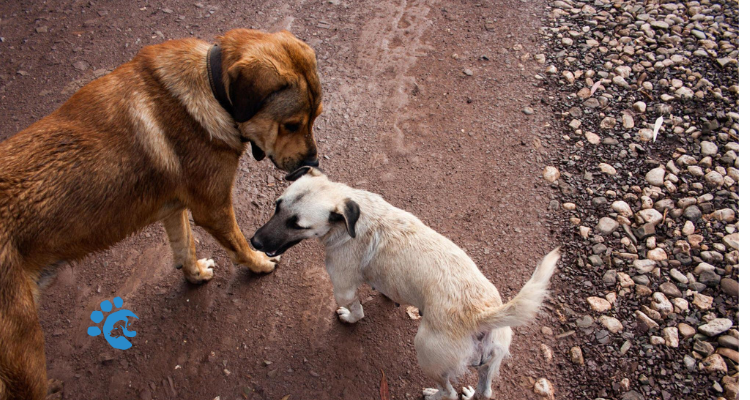Nobody likes the idea of dousing their pets in chemicals, but nobody likes the idea of fleas, ticks, and other creepy crawlies living on their canine companions either. This puts pet parents between a rock and a hard place when it comes to balancing external parasites. Fortunately, permethrin, when used correctly, is considered safe for dogs. But that doesn’t mean you should use permethrin without first consulting with your vet. Here we’ll break down how to use permethrin properly and safely to keep external parasites at bay.

What is Permethrin?
Permethrin is an insecticide that belongs to the pyrethroid family. All this means is that acts similarly to a group of compounds that are naturally found in the chrysanthemum flower. It is a man-made product that is used to kill lice and mites on livestock species, mosquitos in urban areas, and fleas and ticks on companion animals. K9 Advantix and Frontline Shield are two topical permethrin products you may be familiar with.
Along with animals, permethrin can also be used on crops, gardens, buildings, and clothing to kill and repel a number of unwanted nuisances.
Permethrin works by disrupting the nervous system of insects, causing spasms, paralysis, and death. Dogs and humans are safe from the effects of permethrin because they can break it down quickly and harmlessly. Insects, on the other hand, can not, making it extremely toxic to them. It’s important to know that cats also can’t properly metabolize permethrin, so it shouldn’t be used on them.

How is Permethrin Used in Dogs?
You’ll most likely run into permethrin as a topical insecticide that you put on your dog’s skin. These medications are absorbed by the skin, providing a metered dosage of permethrin, and other ingredients, throughout a dog’s body for a limited duration to help protect against fleas, ticks, lice, and mites. Other ingredients may be included that will also handle internal parasites, such as roundworms, but that depends on the product.
Topical products containing permethrin will be dosed based on a dog’s weight range. Giving the recommended dose at the recommended frequency is considered safe for most healthy dogs. If your pup has a health condition, be sure to consult your veterinarian before giving your dog permethrin-containing products or any other parasiticides.
You may also find permethrin as an area spray to treat fleas and ticks in your home. These come in a variety of formulations, so you should use them according to the labeled instructions.
How Often is Permethrin Given to Dogs?
Most topical flea and tick products that contain permethrin are labeled to be given roughly once a month, or every 30 days. If you forget to give your pup their next dose, just give it as soon as you remember then readjust your schedule for the next 30 days. Be aware that a lapse in treatment may put your pup at risk of a flea, tick, or otherwise infestation, but giving the next dose as soon as you remember will likely take care of it.

Permethrin Potential Side Effects
When used at the recommended dosage and frequency in healthy dogs, side effects are rare, but you may see:
- Redness, itching, or greasiness at the application site
- Vomiting or diarrhea if ingested
- Incoordination, twitching, or behavioral changes
Since permethrin has a rather yucky taste, it’s unlikely that a dog will ingest enough to become a problem, but overdoses can occur. In these cases, your dog may experience neurological signs of incoordination, muscle tremors, or lethargy. Contact your vet if your dog is displaying any unusual signs after using a permethrin-containing product.
Cats can be extremely sensitive to permethrin. If a product is unintentionally used on a cat, it can cause severe neurological issues, and even death. Don’t use permethrin products on cats and don’t allow your cat to be around your dog until the product is absorbed.
Frequently Asked Questions
What bugs does permethrin keep away?
Permethrin works well to kill and repel fleas, ticks, mosquitos, lice, mites, and flies. It can be used as a topical medication for dogs or as an area spray for homes, buildings, and outdoor areas. It can also be used as a spray on livestock.
Is permethrin safe after it dries?
At the proper dose, permethrin is safe to use in dogs, but it can be dangerous to use on a cat. However, once the product is dry, it is typically safe for a cat to be around it. In other words, once your room spray is dry or your dog’s topical is absorbed, it’s considered safe for your cat. If you have any questions, ask your vet.
What should I do if my dog or cat experiences any side effects after using permethrin?
If you notice any of the above signs after using a permethrin product, contact your vet or pet poison hotline immediately and follow their recommendations. Consult your veterinarian for the appropriate dosage for your dog before use.


In Conclusion
Permethrin is considered safe to use in dogs at the appropriate dose and frequency. It can work wonders against fleas, ticks, mites, and lice when used as a topical and may even help repel mosquitos and flies. Just be sure to consult your veterinarian if your dog has any health issues and to ensure you are using a proper dose. Never use permethrin products on cats.
Featured Image Credit: luchschenF, Shutterstock




